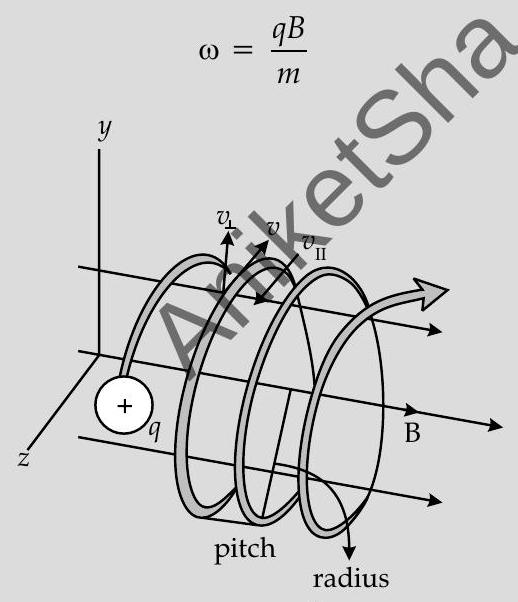Question: Q. 9. Consider the motion of a charged particle of mass and charge moving with velocity in a magnetic field .
(i) If is perpendicular to , show that it describes a circular path having angular frequency
.
(ii) If the velocity has a component parallel to the magnetic field , trace the path described by the particle. Justify your answer.
U] [Delhi Comptt. I, II, III 2014]
Show Answer
Solution:
Ans. (i) Force acting on the charged particle, moving with a velocity , in a magnetic field :
As,
Since, , it acts as a centripetal force and makes the particle move in a circular path in the plane, perpendicular to the magnetic field.
or
Now
(ii)

The component of velocity parallel to magnetic field, will make the particle move along the field.
The perpendicular component of velocity will cause the particle to move along a circular path in the plane perpendicular to the magnetic field. Hence, the particle will follow a helical path, as shown.
[CBSE Marking Scheme, 2014] 1







